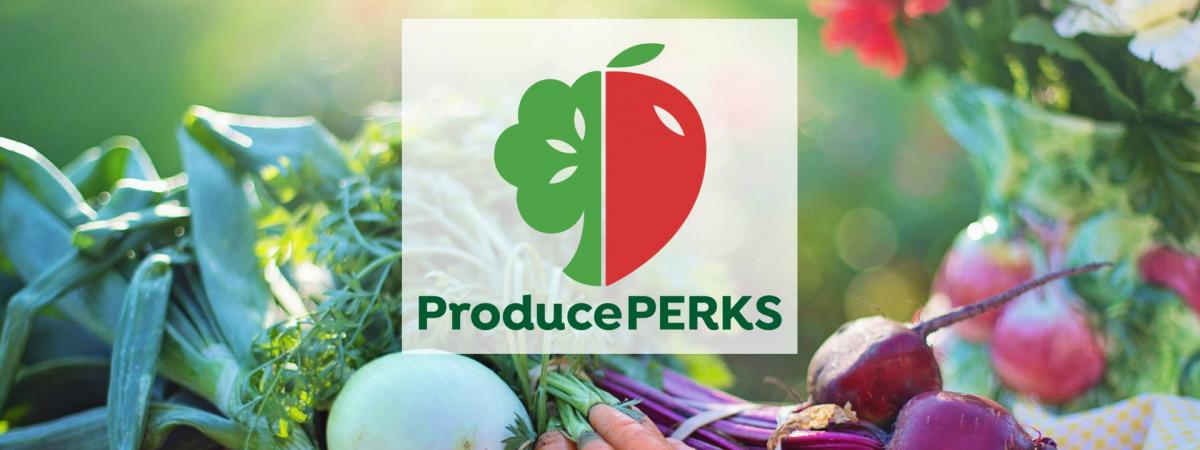Produce Perks is Ohio’s nutrition incentive program and as statewide evaluators, we are part of the Ohio Nutrition Incentive Network (OHNIN), a statewide partnership led by Produce Perks Midwest (PPM). Produce Perks empowers SNAP recipients to purchase fresh, healthy fruits and vegetables from Ohio farmers’ markets and grocery stores across the state. The program provides a dollar-for-dollar match for shoppers using SNAP/EBT to buy fresh produce. The program operates at more than 100 locations across the state and program operations vary per location.
The Swetland team, led by Dr. Darcy Freedman, comprehensively evaluated various aspects of the Produce Perks program by collecting and analyzing data and then collaborated with statewide partners to identify opportunities for increased impact and program advancement. Through this statewide evaluation project, the research team routinely analyzed program metrics, conducted community participatory evaluation studies, and collaborated with partners to develop innovative, community-based strategies to increase affordable, healthy food access for low-resource individuals and families across the state of Ohio. In addition to the evaluation of the program, the Swetland Center’s work around Produce Perks includes case studies, cross-sectional surveys, and pragmatic trials. For historical data briefs and publications related to Ohio Produce Perks, click here.
For any questions regarding the Produce Perks program or evaluation studies, please contact Darcy Freedman at daf96@case.edu
2020 Statewide Produce Perks Data Brief
To view the 2019 Produce Perks Impact Report, click here.
The retail case studies, led by CWRU with support from PPM, investigate the core elements of a healthy food incentive program implementation in diverse grocery retail sites, in different geographic contexts. The goals of the individual retail case studies are to identify core elements that contribute to the successful implementation of nutrition incentive programs in diverse retail sites, different geographic contexts (urban and rural) and unique modes of program delivery. Ohio is a leader in SNAP incentive programming, having offered the Produce Perks program at farmers’ markets since 2010. In late 2017, pilot programming expanding into retail locations to increase access for SNAP customers to utilize the program and in 2018 twelve (12) retail sites offered SNAP incentive programming.
The development and dissemination of materials is a primary goal of this evaluation project, which would include best practices that can be utilized in states that want to implement similar programs in grocery stores and a qualitative research manuscript. Data collection began in April 2019 and will be complete by December 2020. Due to COVID-19, the tools and methods used for data collection have been modified but maintain the original goal of the project.
As SNAP incentive programs grow nationally, understanding the factors and patterns of program use become increasingly more relevant. The goal of the cross-sectional surveys is to identify predictors of incentive use (Produce Perks program) at both retail and direct-to-consumer (e.g., farmers’ markets) settings and to better understand fruit and vegetable purchasing and consumption among various program users and non-users within the different settings. Some of the questions and topics the survey will try to answer include:
- What factors predict use of different healthy food incentive programs among SNAP recipients?
- What is the relationship between use of different health food incentive program models (e.g., Direct-to-Consumer, grocery store) on fruit and vegetable consumption among SNAP recipients?
- Self-efficacy related to purchasing, preparing, and consuming fruits and vegetables
- Food shopping patterns and preferences
Due to COVID-19, the original survey and protocol were modified to account for the impact a pandemic has had on individuals food shopping and consumption habits. The modified survey was shaped by the following research questions:
- How has COVID-19 changed SNAP recipients use of the Produce Perks program?
- What factors motivated or served as barriers to use of Produce Perks since COVID-19 was declared a pandemic in March 2020?
- What are the food procurement behaviors of people receiving SNAP in the face of the COVID-19 pandemic?


